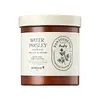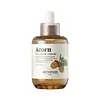What's inside
What's inside
 Key Ingredients
Key Ingredients

 Benefits
Benefits

 Concerns
Concerns

 Ingredients Side-by-side
Ingredients Side-by-side

Water
Skin ConditioningOenanthe Javanica Extract
AntimicrobialButylene Glycol
Humectant1,2-Hexanediol
Skin ConditioningDipropylene Glycol
HumectantCitrus Junos Fruit Extract
Skin ConditioningPanthenol
Skin ConditioningPPG-13-Decyltetradeceth-24
EmulsifyingBetaine
HumectantEthylhexylglycerin
Skin ConditioningFicus Carica Fruit Extract
HumectantAllantoin
Skin ConditioningGlycerin
HumectantPropanediol
SolventDiphenyl Dimethicone
EmollientTriethylhexanoin
MaskingCapryloyl Salicylic Acid
ExfoliatingCentella Asiatica Extract
CleansingSodium Citrate
BufferingSalvia Officinalis Leaf Extract
CleansingChamomilla Recutita Extract
Skin ConditioningDipotassium Glycyrrhizate
HumectantSodium Phytate
Polyglyceryl-10 Oleate
Skin ConditioningHydrogenated Lecithin
EmulsifyingSodium Hyaluronate
HumectantPhospholipids
Skin ConditioningRhodomyrtus Tomentosa Fruit Extract
HumectantEucalyptus Globulus Leaf Oil
PerfumingLeuconostoc/Radish Root Ferment Filtrate
AntimicrobialCitrus Aurantium Bergamia Fruit Oil
MaskingHelianthus Annuus Seed Oil
EmollientPantothenic Acid
Skin ConditioningSalvianolic Acid B
Skin ConditioningWater, Oenanthe Javanica Extract, Butylene Glycol, 1,2-Hexanediol, Dipropylene Glycol, Citrus Junos Fruit Extract, Panthenol, PPG-13-Decyltetradeceth-24, Betaine, Ethylhexylglycerin, Ficus Carica Fruit Extract, Allantoin, Glycerin, Propanediol, Diphenyl Dimethicone, Triethylhexanoin, Capryloyl Salicylic Acid, Centella Asiatica Extract, Sodium Citrate, Salvia Officinalis Leaf Extract, Chamomilla Recutita Extract, Dipotassium Glycyrrhizate, Sodium Phytate, Polyglyceryl-10 Oleate, Hydrogenated Lecithin, Sodium Hyaluronate, Phospholipids, Rhodomyrtus Tomentosa Fruit Extract, Eucalyptus Globulus Leaf Oil, Leuconostoc/Radish Root Ferment Filtrate, Citrus Aurantium Bergamia Fruit Oil, Helianthus Annuus Seed Oil, Pantothenic Acid, Salvianolic Acid B
Water
Skin ConditioningQuercus Acutissima Fruit Extract 10%
AstringentPropanediol
SolventDipropylene Glycol
HumectantButylene Glycol
HumectantGlycerin
HumectantNiacinamide
SmoothingPentylene Glycol
Skin ConditioningHamamelis Virginiana Extract
AntiseborrhoeicPolyglyceryl-10 Laurate
Skin ConditioningHydroxyacetophenone
Antioxidant1,2-Hexanediol
Skin ConditioningOpuntia Ficus-Indica Stem Extract
Skin ConditioningAcrylates/C10-30 Alkyl Acrylate Crosspolymer
Emulsion StabilisingTromethamine
BufferingDiospyros Kaki Fruit Extract
Skin ConditioningCamellia Sinensis Leaf Extract
AntimicrobialCastanea Crenata Shell Extract
Skin ConditioningGluconolactone
Skin ConditioningPanthenol
Skin ConditioningAllantoin
Skin ConditioningCarbomer
Emulsion StabilisingAdenosine
Skin ConditioningDiphenyl Dimethicone
EmollientTriethylhexanoin
MaskingSodium Phytate
Sodium Polyacryloyldimethyl Taurate
Emulsion StabilisingEnantia Chlorantha Bark Extract
Skin ConditioningSodium Hyaluronate
HumectantHydrolyzed Lupine Protein
Skin ConditioningDextrin
AbsorbentTheobroma Cacao Extract
Skin ConditioningPolyglyceryl-10 Oleate
Skin ConditioningHydrogenated Lecithin
EmulsifyingEucalyptus Globulus Leaf Oil
PerfumingRosmarinus Officinalis Leaf Oil
MaskingAmyris Balsamifera Bark Oil
MaskingBiosaccharide Gum-1
HumectantSalvia Officinalis Oil
MaskingCitrus Aurantium Bergamia Fruit Oil
MaskingPueraria Lobata Root Extract
HumectantUlmus Davidiana Root Extract
Skin ConditioningOenothera Biennis Flower/Leaf/Stem Extract
Skin ConditioningPinus Palustris Leaf Extract
TonicHelianthus Annuus Seed Oil
EmollientPalmitoyl Tripeptide-5
Skin ConditioningSalvia Sclarea Oil
MaskingEthylhexylglycerin
Skin ConditioningHydroxypropyltrimonium Hyaluronate
Oleanolic Acid
Skin ConditioningSodium Acetylated Hyaluronate
HumectantHydrolyzed Hyaluronic Acid
HumectantHyaluronic Acid
HumectantSodium Hyaluronate Crosspolymer
HumectantHydrolyzed Sodium Hyaluronate
Skin ConditioningPotassium Hyaluronate
Skin ConditioningWater, Quercus Acutissima Fruit Extract 10%, Propanediol, Dipropylene Glycol, Butylene Glycol, Glycerin, Niacinamide, Pentylene Glycol, Hamamelis Virginiana Extract, Polyglyceryl-10 Laurate, Hydroxyacetophenone, 1,2-Hexanediol, Opuntia Ficus-Indica Stem Extract, Acrylates/C10-30 Alkyl Acrylate Crosspolymer, Tromethamine, Diospyros Kaki Fruit Extract, Camellia Sinensis Leaf Extract, Castanea Crenata Shell Extract, Gluconolactone, Panthenol, Allantoin, Carbomer, Adenosine, Diphenyl Dimethicone, Triethylhexanoin, Sodium Phytate, Sodium Polyacryloyldimethyl Taurate, Enantia Chlorantha Bark Extract, Sodium Hyaluronate, Hydrolyzed Lupine Protein, Dextrin, Theobroma Cacao Extract, Polyglyceryl-10 Oleate, Hydrogenated Lecithin, Eucalyptus Globulus Leaf Oil, Rosmarinus Officinalis Leaf Oil, Amyris Balsamifera Bark Oil, Biosaccharide Gum-1, Salvia Officinalis Oil, Citrus Aurantium Bergamia Fruit Oil, Pueraria Lobata Root Extract, Ulmus Davidiana Root Extract, Oenothera Biennis Flower/Leaf/Stem Extract, Pinus Palustris Leaf Extract, Helianthus Annuus Seed Oil, Palmitoyl Tripeptide-5, Salvia Sclarea Oil, Ethylhexylglycerin, Hydroxypropyltrimonium Hyaluronate, Oleanolic Acid, Sodium Acetylated Hyaluronate, Hydrolyzed Hyaluronic Acid, Hyaluronic Acid, Sodium Hyaluronate Crosspolymer, Hydrolyzed Sodium Hyaluronate, Potassium Hyaluronate
Ingredients Explained
These ingredients are found in both products.
Ingredients higher up in an ingredient list are typically present in a larger amount.
1,2-Hexanediol is a synthetic liquid and another multi-functional powerhouse.
It is a:
- Humectant, drawing moisture into the skin
- Emollient, helping to soften skin
- Solvent, dispersing and stabilizing formulas
- Preservative booster, enhancing the antimicrobial activity of other preservatives
Allantoin is a soothing ingredient known for its protective and moisturizingg properties. Because of this, it is often added to products with strong active ingredients.
Studies show higher concentrations of this ingredient can promote wound healing.
Though it can be derived from the comfrey plant, allantoin is produced synthetically for cosmetic products to ensure purity.
Learn more about AllantoinButylene Glycol (or BG) is used within cosmetic products for a few different reasons:
Overall, Butylene Glycol is a safe and well-rounded ingredient that works well with other ingredients.
Though this ingredient works well with most skin types, some people with sensitive skin may experience a reaction such as allergic rashes, closed comedones, or itchiness.
Learn more about Butylene GlycolCitrus Aurantium Bergamia Fruit Oil is the oil from the bergamot orange. It is native to Italy.
This ingredient is used to add fragrance to products. It contains limonene, linalool, and linalyl acetate.
The term 'fragrance' is not regulated in many countries. In many cases, it is up to the brand to define this term. For instance, many brands choose to label themselves as "fragrance-free" because they are not using synthetic fragrances. However, their products may still contain ingredients such as essential oils that are considered a fragrance.
When used topically, Citrus Aurantium Bergamia Fruit Oil is a photosensitizer due to its furanocoumarins. Photosensitizers make the skin and eyes much more sensitive to sunlight. Photosensitizers are linked to skin cancer.
However, more cosmetics using Citrus Aurantium Bergamia Fruit Oil are removing the furanocoumarins.
Bergamot oil was also found to have anti-inflammatory, antibacterial and antifungal properties.
Learn more about Citrus Aurantium Bergamia Fruit OilDiphenyl Dimethicone is a type of silicone.
Dipropylene Glycol is a synthetically created humectant, stabilizer, and solvent.
This ingredient helps:
Dipropylene glycol is technically an alcohol, but it belongs to the glycol family (often considered part of the ‘good’ alcohols). This means it is hydrating and gentle on skin unlike drying solvent alcohols like denatured alcohol.
As a masking agent, Dipropylene Glycol can be used to cover the smell of other ingredients. However, it does not have a scent.
Studies show Dipropylene Glycol is considered safe to use in skincare.
Learn more about Dipropylene GlycolEthylhexylglycerin (we can't pronounce this either) is commonly used as a preservative and skin softener. It is derived from glyceryl.
You might see Ethylhexylglycerin often paired with other preservatives such as phenoxyethanol. Ethylhexylglycerin has been found to increase the effectiveness of these other preservatives.
This oil is derived from the leaves of Eucalyptus Globulus, a type of Eucalyptus tree native to Australia.
Though this oil shows antibacterial and antioxidant activity, it is also a known skin-irritant due to its fragrance components.
Glycerin is already naturally found in your skin. It helps moisturize and protect your skin.
A study from 2016 found glycerin to be more effective as a humectant than AHAs and hyaluronic acid.
As a humectant, it helps the skin stay hydrated by pulling moisture to your skin. The low molecular weight of glycerin allows it to pull moisture into the deeper layers of your skin.
Hydrated skin improves your skin barrier; Your skin barrier helps protect against irritants and bacteria.
Glycerin has also been found to have antimicrobial and antiviral properties. Due to these properties, glycerin is often used in wound and burn treatments.
In cosmetics, glycerin is usually derived from plants such as soybean or palm. However, it can also be sourced from animals, such as tallow or animal fat.
This ingredient is organic, colorless, odorless, and non-toxic.
Glycerin is the name for this ingredient in American English. British English uses Glycerol/Glycerine.
Learn more about GlycerinHelianthus Annuus Seed Oil is the oil derived from the seeds of a Sunflower. Sunflower seed oil is non-fragrant. It is an emollient, meaning it helps to soften the skin.
Sunflower seed oil contains many fatty acids. The fatty acids found in sunflower seeds include (from highest amount to least): linoleic acid, myristic acid, palmitic acid, stearic acid, arachidic acid, oleic acid, and linolenic acid.
These fatty acids help the skin create ceramides. Ceramides play a role in repairing the skin barrier.
Helianthus Annuus Seed Oil helps moisturize the skin. This in turn helps the skin look more rejuvenated and smoother.
Sunflowers are rich in vitamin E.
Historians believe Indigenous cultures of North America domesticated sunflowers before corn. Thus they relied on sunflower oil for a variety of uses. One such use is moisturizing skin and hair.
Sunflower seed oil may not be fungal acne safe. We recommend speaking with a professional if you have any concerns.
Learn more about Helianthus Annuus Seed OilHydrogenated Lecithin is created from the hydrogenation of lecithin (a group of phospholipids). Hydrogenation is a chemical reaction between hydrogen and another element.
This ingredient is an emollient and emulsifier. As an emollient, it helps soften skin by trapping moisture within. As an emulsifier, it prevents oil and water ingredients from separating.
Panthenol is a common ingredient that helps hydrate and soothe the skin. It is found naturally in our skin and hair.
There are two forms of panthenol: D and L.
D-panthenol is also known as dexpanthenol. Most cosmetics use dexpanthenol or a mixture of D and L-panthenol.
Panthenol is famous due to its ability to go deeper into the skin's layers. Using this ingredient has numerous pros (and no cons):
Like hyaluronic acid, panthenol is a humectant. Humectants are able to bind and hold large amounts of water to keep skin hydrated.
This ingredient works well for wound healing. It works by increasing tissue in the wound and helps close open wounds.
Once oxidized, panthenol converts to pantothenic acid. Panthothenic acid is found in all living cells.
This ingredient is also referred to as pro-vitamin B5.
Learn more about PanthenolPolyglyceryl-10 Oleate isn't fungal acne safe.
Propanediol is an all-star ingredient. It softens, hydrates, and smooths the skin.
It’s often used to:
Propanediol is not likely to cause sensitivity and considered safe to use. It is derived from corn or petroleum with a clear color and no scent.
Learn more about PropanediolSodium Hyaluronate is hyaluronic acid's salt form. It is commonly derived from the sodium salt of hyaluronic acid.
Like hyaluronic acid, it is great at holding water and acts as a humectant. This makes it a great skin hydrating ingredient.
Sodium Hyaluronate is naturally occurring in our bodies and is mostly found in eye fluid and joints.
These are some other common types of Hyaluronic Acid:
Learn more about Sodium HyaluronateSodium Phytate is the synthetic salt form of phytic acid. Phytic acid is an antioxidant and can be found in plant seeds.
Sodium Phytate is a chelating agent. Chelating agents help prevent metals from binding to water. This helps stabilize the ingredients and the product.
Triethylhexanoin is created from glycerin and 2-ethylhexanoic acid. It is a solvent and emollient.
As a solvent, Triethylhexanoin helps dissolve ingredients to stable bases or help evenly distribute ingredients throughout the product.
It is also an emollient and helps condition the skin.
Learn more about TriethylhexanoinWater. It's the most common cosmetic ingredient of all. You'll usually see it at the top of ingredient lists, meaning that it makes up the largest part of the product.
So why is it so popular? Water most often acts as a solvent - this means that it helps dissolve other ingredients into the formulation.
You'll also recognize water as that liquid we all need to stay alive. If you see this, drink a glass of water. Stay hydrated!
Learn more about Water